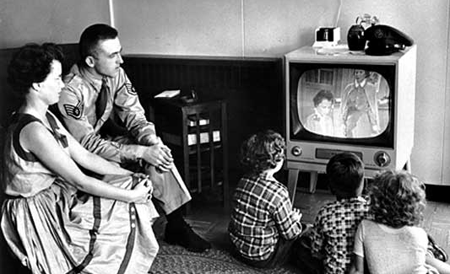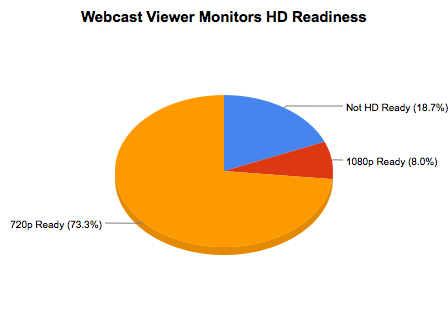 Pop Quiz: Which broadcast would generate more revenue? The one with 30,000 uniques or the one with 9,000 uniques?
Pop Quiz: Which broadcast would generate more revenue? The one with 30,000 uniques or the one with 9,000 uniques?
The answer? It’s a trick question. In spite of the fact that unique views is the metric most in demand by event organizers, advertisers and producers, as a measurement of success it doesn’t reveal nearly enough information.
Advertisers and sponsors pay for impressions, the number of times their brand was exposed to a viewer. The more impressions generated from a live broadcast, the more money they are willing to pay.
However, uniques alone doesn’t give nearly enough information about how many impressions occurred. Unlike a webpage, uniques views is not indicative of the total impressions generated in a live broadcasts. Throughout a viewing session, some viewers will see 3 ads, others 30 and others none. Measuring uniques doesn’t capture any of this information.
Consider the above scenario. It’s possible that 30,000 viewers watched for an average of 3 minutes while the 9,000 viewers watched on average for 30. If this were the case, the second audience is actually 3 times more valuable to sponsors and advertisers because as a whole they had 3 times as long to be exposed.
Adequately measuring the value of a live broadcast to sponsors requires a better, more comprehensive metric: Minutes.
What is “MINUTES”?
Minutes is the total amount of time watched by all the viewers of a live broadcast. For example, if a webcast has two viewers, John, who watches for 5 minutes, and Julie, who watches for 40 minutes, the total minutes for that webcast is 45. In original example, we can calculate the in the first webcast to total minutes was 90,000 (30,000 viewers x 3 mins/viewer) while the second was 270,000 (9,000 viewers x 30 mins/viewer).
As you can see, the advantage of this metric is that it captures both the number of uniques and their engagement in one simple number. Simply put, if you want to compare apples to apples, this is the metric you should be using.
MINUTES = MONEY
One of the challenges of monetizing live online broadcasts is that you have no idea exactly how many impressions your live stream’s commercials generated. However, unlike with unique views, with minutes you can easily approximate the number of impressions that your live broadcast generates. To do this, you need two other numbers: Total Commercials and total broadcast running time. If you recorded your event, simply sit down and watch it again to collect the necessary information.
Once you have those numbers, the formula is easy:
Minutes x Total Number of Ads / Total Program Running Time = Impressions
Remember, sponsors and advertisers pay for impressions. The more impressions that your broadcast generates, them more value your live stream has. That’s a powerful statistic that’s not available if you calculate uniques alone.
Using minutes to get more return
Growing minutes is pretty abstract, and hard to plan for. Indeed, I think that is one of the appeals of using uniques to compare broadcasts: it’s easily understood, easy to plan for and easy to measure. However, when you combine uniques with minutes, you can calculate another elusive but easily understood metric that will further empower you to grow your live stream: Average Viewing Time (AVT). While uniques tends to measure the success of your marketing and distribution strategies, AVT helps you measure the quality of your program. The more successful your program, the longer people watch, the more ads they see and the more value you create.
You can easily calculate AVT by
AVT = Total Minutes / Unique Viewers
Looking at all three individually, you can glean an enormous amount of information about your event. If you have a ton of uniqes, but low engagement, then you know you need to work on creating more reasons to stay engaged. If the opposite is true, high engagement, but low uniques, then you have an interesting event, but you need to pull in more viewers.
Since its relatively easy to create strategies focusing on either one of those goals, you can easily evaluate if your strategies are succeeding. Overall, minutes captures both these metrics and lets you compare apples to apples.
Conclusion
Hopefully, now that you understand minutes and how you can use them to better monetize and grow your event. If you’re interested in specific examples for how to monetize and increase minutes, check out our Live Webcast Strategy Guide. It’s a free 20-page strategy guide filled with tips, insights, best practices and additional resources to attract the most viewers, create better engagement and get the most return from sponsorships.

 For action sports events, reaching hundred of thousands of viewers around the world through a live webcast promises enormous potential. Most event organizers, however, currently lack sufficient understanding of live online broadcasts to optimize and fully monetize them for their event. Without that knowledge, the return on investment, both in terms of audience and sponsorship, is not yet close to what it could be. Lower returns have a direct effect on the long-term success of the event.
For action sports events, reaching hundred of thousands of viewers around the world through a live webcast promises enormous potential. Most event organizers, however, currently lack sufficient understanding of live online broadcasts to optimize and fully monetize them for their event. Without that knowledge, the return on investment, both in terms of audience and sponsorship, is not yet close to what it could be. Lower returns have a direct effect on the long-term success of the event. Aside from
Aside from  While Facebook provides you access to your fans' streams, it is sometimes challenging to rise above the noise. While there are ways to increase the likeliness of your content appearing in a user's feed (which we will get to), there is no guarantee. Unfortunately, due to concerns about spam, Facebook does not give you access to your fans' email addresses.
While Facebook provides you access to your fans' streams, it is sometimes challenging to rise above the noise. While there are ways to increase the likeliness of your content appearing in a user's feed (which we will get to), there is no guarantee. Unfortunately, due to concerns about spam, Facebook does not give you access to your fans' email addresses.
 Unfortunately, TV's expense is overwhelming. As production and ditstribution is paid for by the events, almost none could afford live coverage and only the largest could produce a tape delayed show.
Unfortunately, TV's expense is overwhelming. As production and ditstribution is paid for by the events, almost none could afford live coverage and only the largest could produce a tape delayed show. There has been an enormous boom in
There has been an enormous boom in 

 Sometimes it seems like electronics
Sometimes it seems like electronics 
 At a major ski competition a few years ago, the snow was so heavy it knocked out the wireless internet connection. The webcast provider (not us) skied tapes of the event down to the bottom of the mountain and streamed the competition from a hard wire connection.
At a major ski competition a few years ago, the snow was so heavy it knocked out the wireless internet connection. The webcast provider (not us) skied tapes of the event down to the bottom of the mountain and streamed the competition from a hard wire connection.